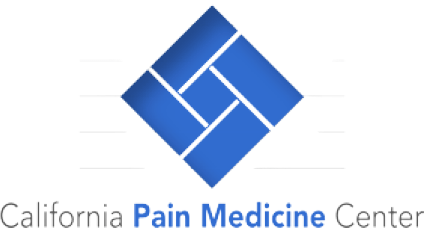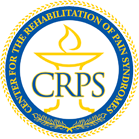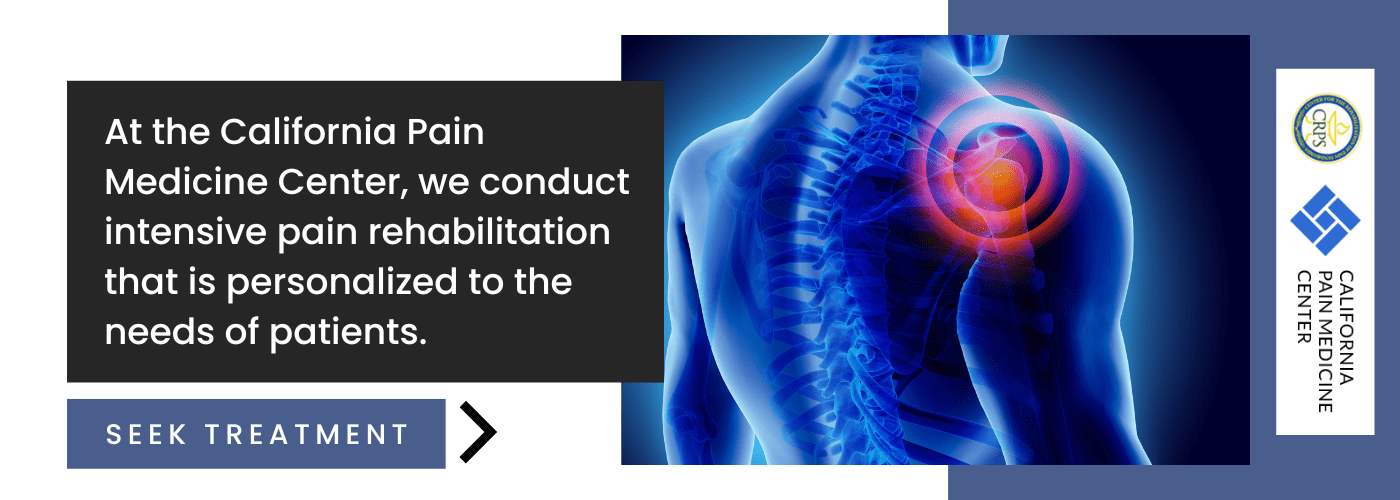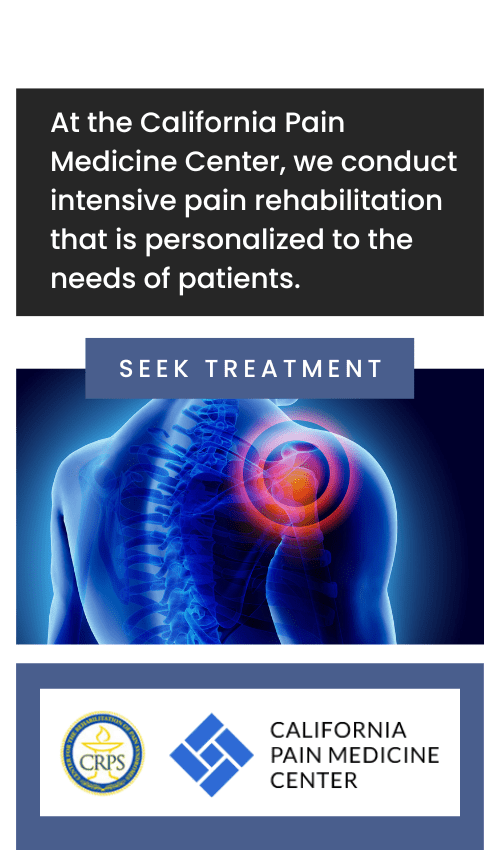PRP for Shoulder Pain
California Pain Medicine CenterShoulder pain is one of the most common complaints of young athletes and older individuals. It can be brought on by injury or chronic overuse.
What are some important facts to know about shoulder pain?
Basic functioning of the arm depends greatly on the proper shoulder mechanics as it connects the arm to the rest of the body. Shoulder pain can disrupt this normal functioning and cause difficulty with daily activities. Diagnosis and treatment is important in preserving function.
How can patients address shoulder pain?
Seeking treatment is the first step in improving shoulder pain and function.
What are the most common symptoms of shoulder pain?
Pain can occur at many different locations in the shoulder and these indicate different problems. The top of the shoulder can indicate small AC joint pain. Pain with movement can be rotator cuff tears, biceps tendinitis, or a labral tear. Pain at night when lying on your shoulder is very common for subacromial bursitis.
Limited shoulder motion suggests rotator cuff pathology or frozen shoulder (adhesive capsulitis).
Clicking or popping in the joint can indicate shoulder joint arthritis.
What are the most common causes of shoulder pain?
Arthritis:
Arthritis may easily be evaluated with basic shoulder x-rays. It typically causes diffuse pain that is worse with movement.
Rotator Cuff Tears:
Rotator cuff tears are common in athletes who play throwing sports and older adults with specific or overuse injuries. There are four individual rotator cuff muscles (i.e. supraspinatus, infraspinatus, teres minor, and subscapularis), all of which may be injured.
Bursitis:
Bursitis in the shoulder is very common and causes diffuse sharp pain. It is worse when sleeping at night and causes pain when lifting one’s arm. It responds quite well to injection early in the course of treatment. Physical therapy helps prevent further exacerbations of pain by balancing and stabilizing shoulder muscles.
Irregular Shoulder Biomechanics:
Poor shoulder biomechanics or altered movements (scapular dyskinesis) of the shoulder manifests as chronic intractable pain. It may take years of seeing doctors prior to this being accurately diagnosed.
Myofascial Pain:
Myofascial pain or muscle trigger points are a very common cause of shoulder pain. It often radiates from the muscles around your shoulder blade, neck, and upper back.
What are Some Common Treatments for Shoulder Pain?
Platelet Rich Plasma Therapy (PRP):
Platelet rich plasma (PRP) is used in most painful conditions of the shoulder. Arthritis, rotator cuff tear, and biceps tendinitis. The goal of PRP is treating the underlying problem and not just masking painful symptoms. This is why it is often the treatment of choice to avoid chronic painful conditions.
Steroid Injections:
Steroid injections may help reduce inflammation in painful bursitis within the shoulder. It may also reduce painful symptoms in tendinitis and arthritis. Unlike platelet rich plasma, steroid injections do not typically treat the underlying cause of the pain.
Physical Therapy:
Physical therapy is important in most shoulder conditions. Proper shoulder muscle movements are key in reducing painful symptoms and remaining functional. A physical therapist can work with you on exercises and stretching to promote ongoing health.
Book Appointment
Live Pain Free


Phone
(310) 264-7246
Hours
Mon - Fri: 8am - 5:00pm
Sat - Sun: Closed
Holiday Closed Dates
Address
2001 Santa Monica Blvd
Ste 1280-W
Santa Monica, CA 90404


